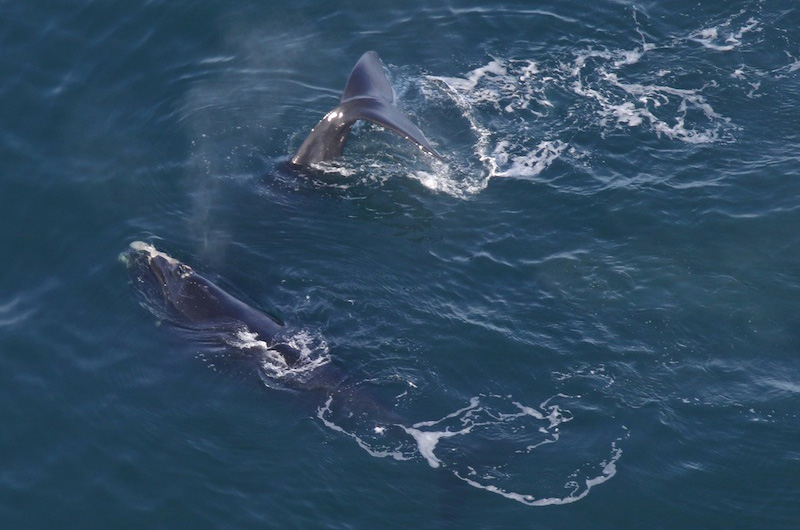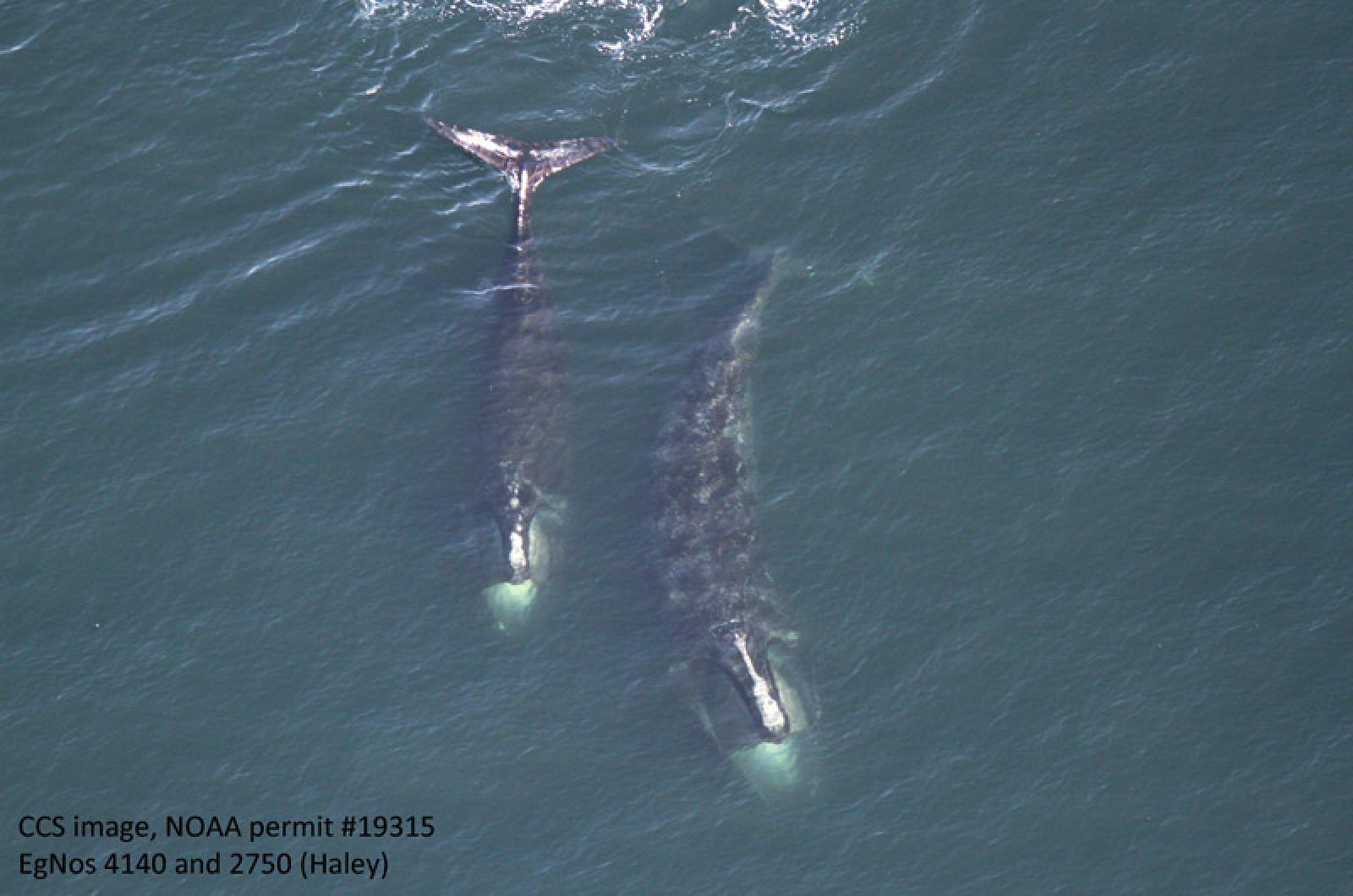Under pressure to reduce the environmental impacts of its wind farm located 15 miles off the Vineyard coast, Vineyard Wind has turned to artificial intelligence in a bid to protect the endangered right whale population that frequently travels in the area.
Right whales are one of the world’s most threatened species, with estimates pegging the remaining population at fewer than 350. Ship strikes and entanglements in fishing gear are the leading causes of death, and scientists are worried that increased ship traffic during wind farm construction will cause more fatalities.
To alleviate risk, Vineyard Wind plans to use an artificial intelligence system called Awarion that is designed to spot whales on the water’s surface in time to prevent ships from colliding with them.
The system was created by research and development firm Charles River Analytics and uses infrared video technology to identify the whales. It is currently being tested by project leaders to determine how well the system works, the distance at which it can detect whales and the best weather conditions for detection.
“We go out there, the system takes a million pictures and we go back to the office to sift through boring images of water until we find the exciting moments when the whales show up,” said Ross Eaton, principal scientist and director of marine systems at Charles River Analytics.

Elaine Coleman, vice president of commercialization at Charles River Analytics, explained that when training an AI detector, it is important to take as many photos as possible to secure the highest probability of detecting whales in real time. She sees Awarion as a way to augment human performance, helping Vineyard Wind know when to take a closer look.
AI systems are increasingly popular in the maritime and commercial fishing industries. Some, like Awarion, are employed on ships and signal captains to slow down when a marine animal is spotted on camera. Others run on buoys to deter ships from traveling in areas where underwater animal sounds have been heard.
“It’s the quintessential ‘AI for good’ project,” Ms. Coleman said. “We’re in it to save these whales and our earth. I’m not moving to Mars.”
Local scientists, however, are cautiously skeptical and would like to know more.
“New technologies are really exciting and great, but we also strongly need to focus on the critical review of these systems,” said Jessica Redfern, associate vice president of ocean conservation science at the New England Aquarium’s Anderson Cabot Center for Ocean Life. “Do they actually reduce risk to whales and by how much?”
Charles “Stormy” Mayo, director of the right whale ecology program at the Center for Coastal Studies in Provincetown, warned that despite their size, right whales can be exceptionally difficult to detect. They can dive for up to 15 minutes while hunting, he said, and a whale could potentially collide with the bottom of a ship before ever being noticed by humans or detection systems, no matter how intelligent.
“AI is neat because once you have all of the data on all of the different variables like zooplankton levels, wind conditions, feeding behavior, et cetera, you could potentially plug it into the system,” he said. “The problem is knowing all of the variables.”
Ms. Redfern also expressed wariness about the ability to react quickly enough to avoid collisions.
“I do think that AI is a cool idea, but being able to respond to a detected whale is very tricky,” she said. “You need to be able to detect it with enough time to change course or slow down. For large ships that’s not an instantaneous thing. It’s complex.”
How Vineyard Wind vessels respond will depend on the ship’s size, speed and the type of job being done on the boat, said Elizabeth Marsjanik, manager of environmental affairs at Vineyard Wind. She said the captains are confident that they can act quickly, notify other vessels around them and avoid disturbing any whales.
Both Ms. Redfern and Mr. Mayo ultimately agreed that any type of increased protection and surveillance for right whales is a step in the right direction — especially if it is to aid renewable energy development.
“The future of right whales and these ecosystems is dependent on climate change,” said Mr. Mayo. “We have to change our use of fossil fuels and from what I know the only solution that has the economic power to actually work at the scale of the problem is offshore wind.”
For leaders at Vineyard Wind and Charles River Analytics, being a part of the country’s clean energy transition and marine species preservation is career-defining.
“I’ve been working on computer vision challenges for 20 years now and before when people asked me about my job, no one was super jazzed,” said Mr. Eaton. “Now when I tell people about my work protecting whales and supporting alternative energy, they light up and so do I.”







Comments (10)
Comments
Comment policy »